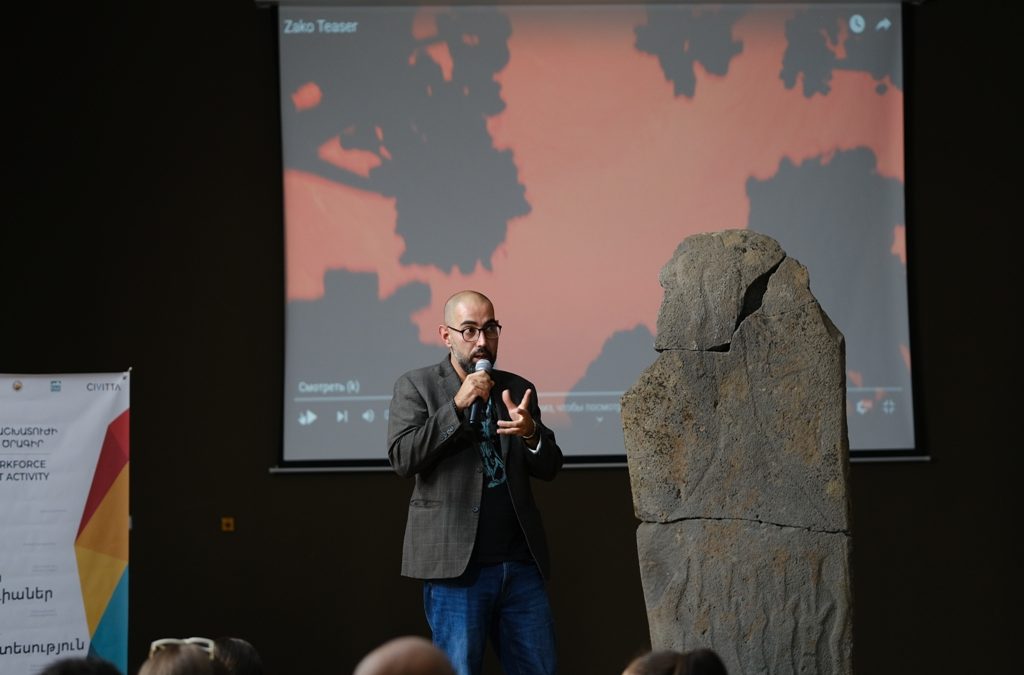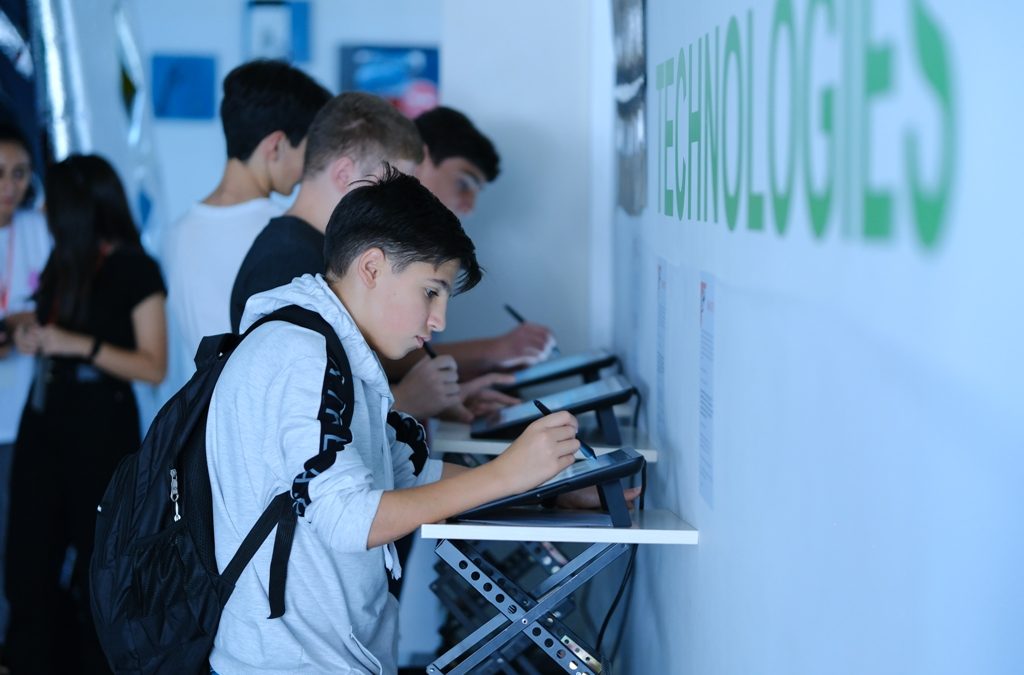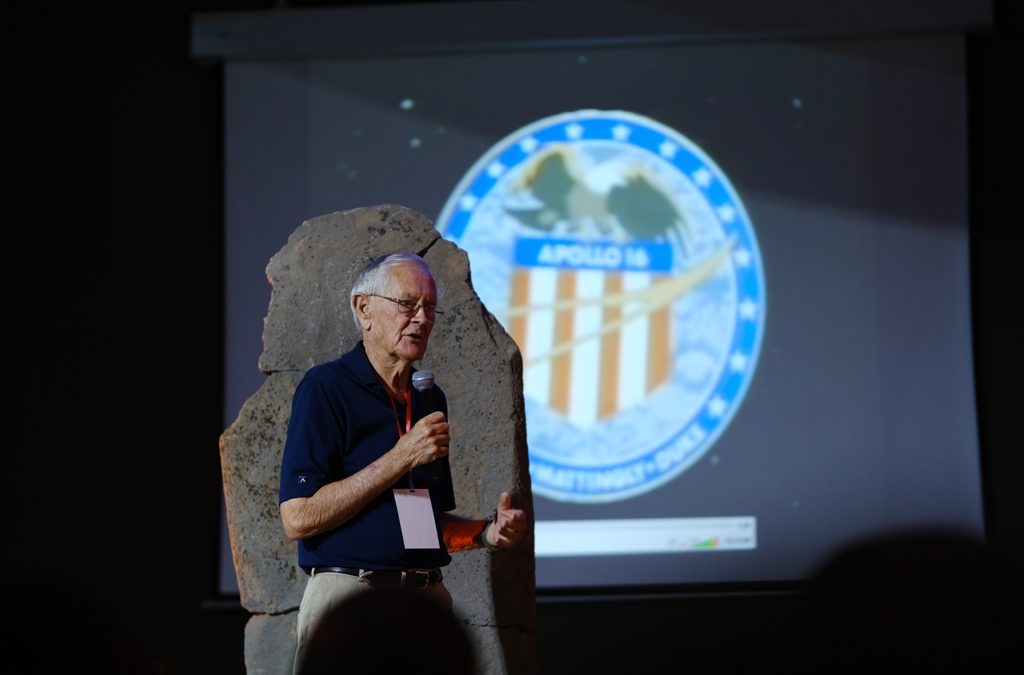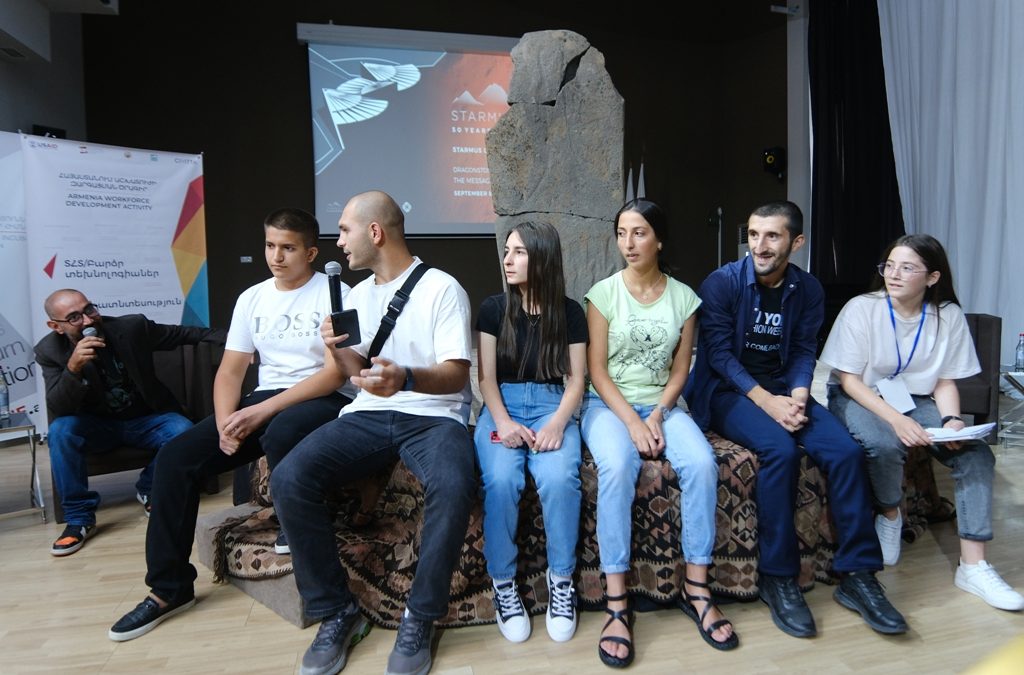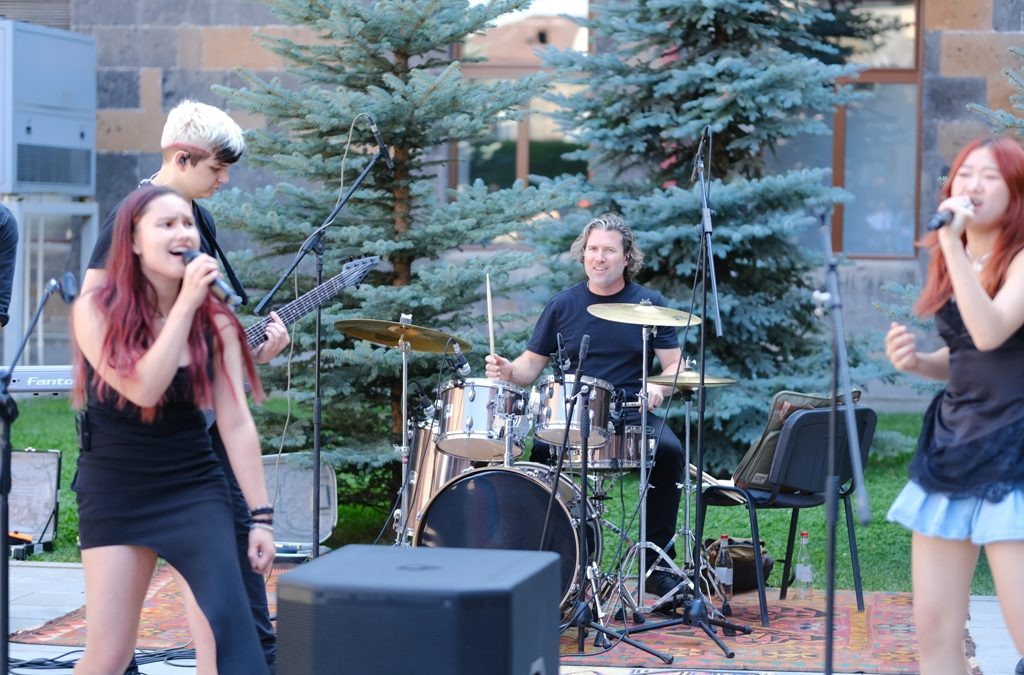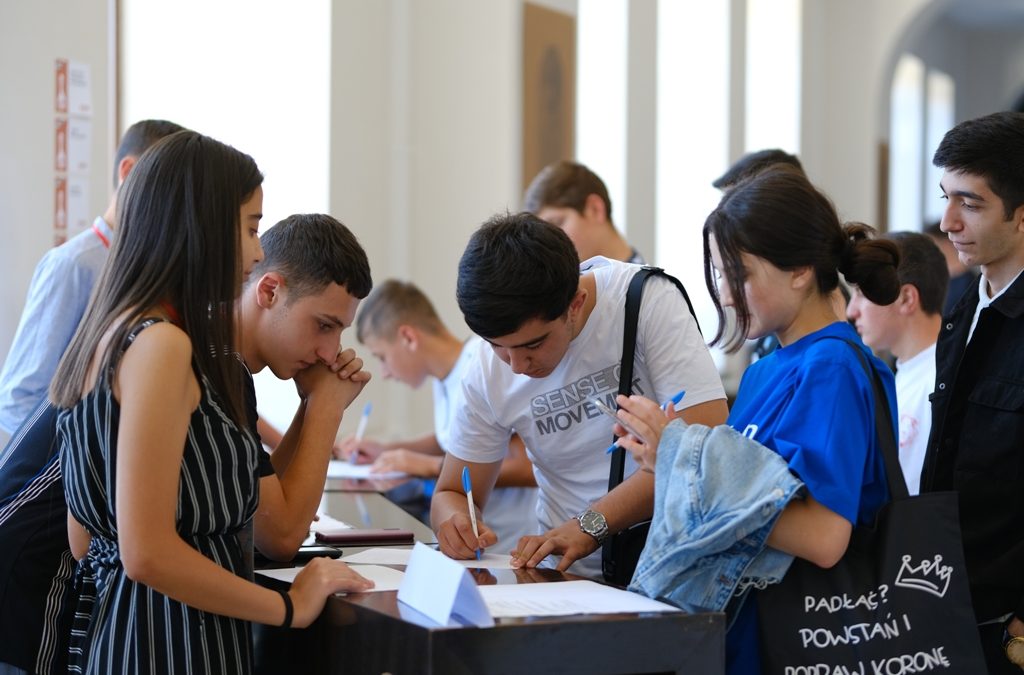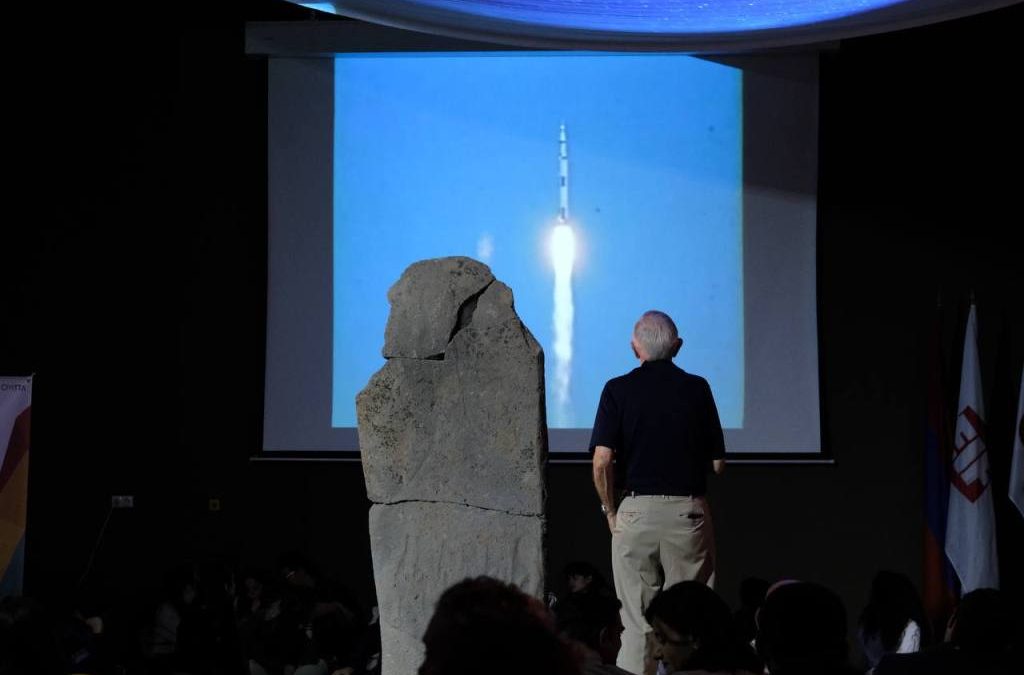Co-creating across science art: looking back at STARMUS VI festival in Gyumri
Looking back at one of the most memorable experiences this year, we can’t move past the Starmus VI International Scientific Festival’s Gyumri chapter, organized by Enterprise Incubator Foundation (EIF) and Gyumri Technology Center (GTC) in collaboration with Galique Art Space, hosted by GTC, in partnership with the “Armenian Workforce Development Activity” program, funded by USAID.
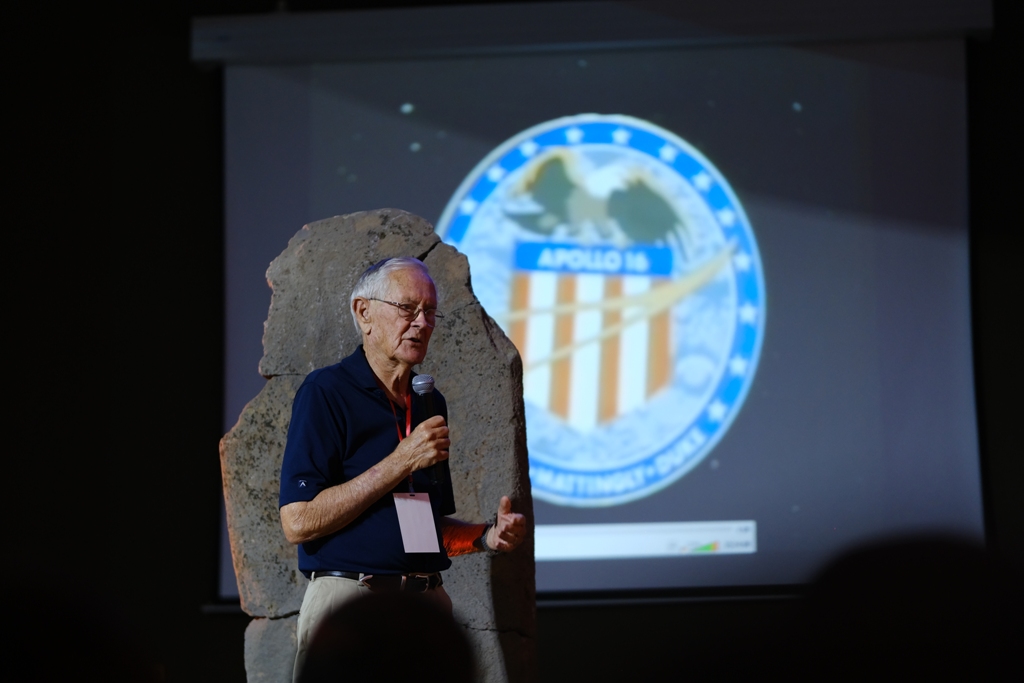
The Starmus International Scientific Festival has long been a source of inspiration for those deeply invested in the festival’s main themes – a crossroads of science and art.
A Series of events titled “StarmusVI x co-creating the future” took place at Gyumri Technology Center from September 8-10th, featuring international key-note speakers, panel discussions, interdisciplinary workshops, and an immersive art exhibition titled “Dragonstone: The message of the Rock”. The festival united more than 500 participants including youth from Armenian regions, renowned artists and leading scientists.
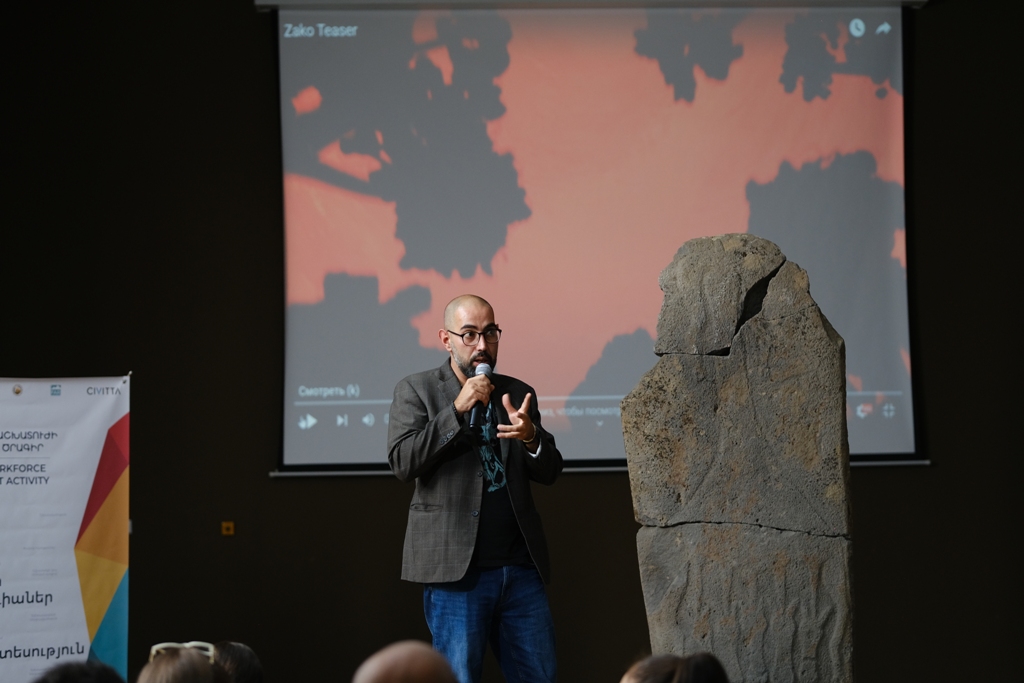
The brightest star of the festival was the Dragonstone ARSHALUYS 5, which was exhibited for the first time, after the excavation and restoration, at GTC as a result of the partnership with “Institute of Archaeology and Ethnography NAS RA”.
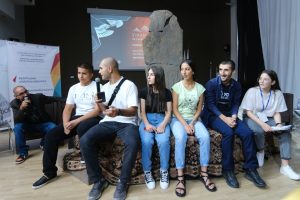
As the theme of the Starmus VI festival, this year was 50 years on Mars, the Dragonstone symbolized the learnings from the past and our heritage which are an inseparable part of humanity and will be carried on even to Mars, helping to learn and adapt in the new environment. Gyumri Technology Center was transformed into an immersive journey through the Earth, the Universe, and particularly Mars. Curated art exhibitions, installations and sound performances guided the guests from the entrance to the conference hall.
The series of events launched on September 8 featured keynote speeches, a panel discussion and an immersive art performance. The welcoming remarks were delivered by Bella Harutyunyan, GTC Business Development Manager and Ambassador of Starmus VI: 50 years on Mars. She was followed by guest keynote speakers: Tony Fadell, iPod creator, iPhone co-creator, Nest and Future Shape founder and Charles Duke, astronaut and member of the Apollo 16 mission.

While sharing the story of the iPod creation Tony Fadell highlighted the importance of co-creation stating. “Anybody who builds, anybody who creates, that can come through art, that can come through design can come through engineering, in different ways. If you build you are empowered, you have tools for the world”. He also encouraged the young people in the audience to take risks and learn from failure as that is the true path to creation.
Charles Duke’s inspiring keynote took the audience on a journey to the Moon and featured footage shot by him as Apollo 16 mission landed and explored the Moon. The keynotes were followed by questions from regional youth, seeking advice and inspiration.
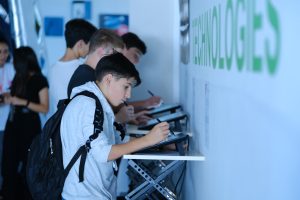 It was then the turn of scientists and artists to discuss the similarity and differences between the scientific and artistic approaches to solving universal problems during the panel discussion titled “Co-creating across science, engineering, and art ”. The panelists underlined the interdisciplinary nature of collaborations, agreeing that it is fundamental to innovate.
It was then the turn of scientists and artists to discuss the similarity and differences between the scientific and artistic approaches to solving universal problems during the panel discussion titled “Co-creating across science, engineering, and art ”. The panelists underlined the interdisciplinary nature of collaborations, agreeing that it is fundamental to innovate.
“Science makes it possible to know the past, live in the present, and discover the future, and art connects humanity with eternity,” was one of the most memorable quotes of the panel discussions. The final event of the day was a rock concert by Syzygy band.

September 9 and 10 were dedicated to interdisciplinary seminars and workshops featuring young researchers, scientists, experts, and students in the fields of science and the arts. Among the participants were beneficiaries of the Armenia Workforce Development Activity(AWDA)program funded by USAID. The workshops focused on 3 major topics: sustainable composite materials, sensorial engineering, and virtual environments.
The workshops aimed to inform the participants about the cutting-edge scientific research being conducted in Armenia as well as the opportunities and support for young researchers offered by EIF and the Science Incubation Team.
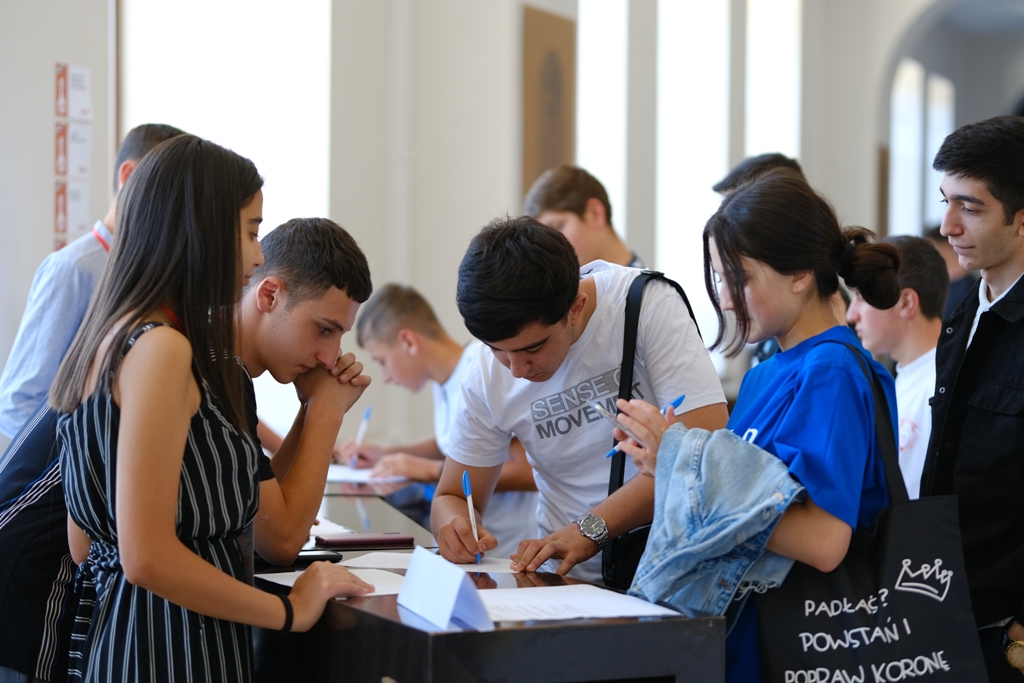
It was a thoroughly immersive and thought-provoking experience at the “Virtual environments” workshop as well. During it, the participants learned what happens to human beings when they find themselves in the virtual world and spatial perception disappears. “How should we use virtual environments?” was one of the main questions of the workshop. Students from Shirak and Lori regions studying programming and design were divided into mixed teams and tried to present their ideas of new products that could be built to enhance the human experiences in virtual environments.
“Starmus VI x co-creating the future” marked the beginning of GTC’s co-creation journey across science, art and technology.

The series of events held in Gyumri within the framework of the Starmus VI festival were carried out by EIF and GTC in cooperation with the Armenia Workforce Development Activity (funded by the U.S. Agency for International Development)and with the support of the Ministry of Education and Culture of Armenia, the Institute of Archeology and Ethnography of the National Academy of Sciences of Armenia (NAS RA), the National Academy of Sciences, and the “Service For The Protection Of Historical Environment and Cultural Museum-reservations”.


